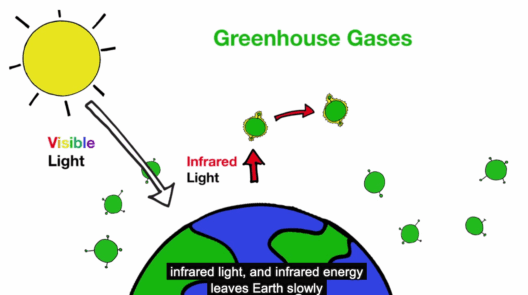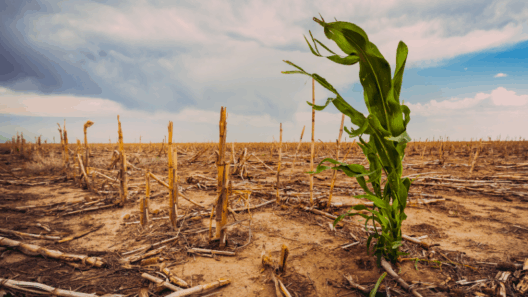The phenomenon of global warming resembles a slow-burning ember, quietly consuming resources, agenda, and consciousness alike. A looming threat, it amplifies climatic anomalies, alters ecosystems, and engenders unpredictable natural disasters. To counter this omnipresent menace, humans must rally efforts akin to a chorus, harmonizing actions that resonate with sustainability. Herein lies an extensive guide on practical strategies to mitigate the effects of global warming, encapsulated in everyday potential actions.
1. Energy Efficiency at Home
Homes are often energy vacuums, consuming vast amounts of electricity for heating, cooling, and lighting. An urgent metamorphosis is necessary. Begin with energy-efficient appliances that gobble less power and emit fewer greenhouse gases. Upgrade insulation to fortified levels, akin to wrapping your home in a warm, protective cloak. Additionally, consider smart thermostats that learn behavior patterns, allowing for optimal energy usage. Simple practices such as turning off lights when not in use or utilizing natural sunlight can further contribute to reduced energy consumption.
2. Embrace Renewable Energy Sources
The sun and wind present an abundant opportunity to transition from fossil fuels. Solar panels harness the sun’s energy, akin to capturing magic from a celestial source. Investing in solar technology, even tentatively, can significantly diminish carbon footprints. Wind turbines, though not a ubiquitous sight, can be integrated into both rural and urban settings, generating clean energy. Governments and local businesses must prioritize incentives for renewable energy adoption, spurring broader societal engagement.
3. Transportation Transformation
Cars, the quintessential symbol of personal freedom, come at a cost to our environment. Opting for public transportation, cycling, or walking can substantially truncate individual carbon footprints. Carpooling serves as another effective strategy, reducing the number of vehicles on the road. For those whose daily lives necessitate driving, consider hybrid or electric vehicles that offer lower emissions. Furthermore, advocating for robust public transit infrastructure can initiate a ripple effect toward reducing dependency on personal vehicles.
4. Sustainable Consumption Practices
In the marketplace, consumers hold immense power. Every purchase is a vote cast in favor of a production method, so choosing organic, local, or sustainably produced goods can steer industries toward greener practices. Minimizing single-use plastics facilitates a healthier ecosystem; opting for reusable bags, containers, and utensils could create a significant positive impact. In addition, cultivating a habit of buying in bulk reduces packaging waste and can lead to cost savings.
5. Forest Preservation and Reforestation
Trees serve as nature’s lungs, absorbing carbon dioxide and releasing oxygen. Protecting existing forests is imperative, making conservation efforts not just noble but essential. Supporting organizations that focus on forest preservation or engaging in local reforestation projects enhances the planet’s arboreal networks. Planting trees is akin to renewing hope; they are slow-growing allies that, once established, can sequester significant amounts of carbon.
6. Advocate for Policy Change
No change is sustainable without supportive legislation. Citizens must become engaged advocates, urging lawmakers to implement stricter regulations on emissions and fossil fuel usage. Writing letters, attending town hall meetings, and voting with climate-conscious candidates ensure that environmental issues remain in the governmental consciousness. Collective advocacy is a clarion call, fostering a movement that can challenge corporate indifference toward climate policies.
7. Water Conservation
Water scarcity, exacerbated by climate change, necessitates urgent action. Simple measures—like fixing leaks, using water-efficient fixtures, and curbing excessive irrigation—can translate to significant water savings. Rainwater harvesting systems, which collect precipitation for reuse, exemplify an innovative approach to conserving this invaluable resource. By adopting water-conscious behaviors, individuals can significantly contribute to mitigating climate change effects.
8. Food Choices and Waste Reduction
The carbon footprint of food production is considerable, with meat and dairy leading the charge. A plant-based diet can markedly lower greenhouse emissions. Even incorporating “Meatless Mondays” can be a pragmatic start. Furthermore, minimizing food waste curtails unnecessary resource expenditure; utilizing leftovers or composting can elevate one’s sustainability quotient. A shift towards regenerative agricultural practices, which enhance soil health and biodiversity, can further bolster food production’s resilience to climate change.
9. Educational Endeavors and Community Engagement
Knowledge is a formidable tool in combating climate change. Hosting workshops, lectures, or community forums can disseminate vital information and inspire collective actions to confront global warming. Engaging the youth, particularly, fosters a sense of stewardship toward the environment. Educational programs that enthuse younger generations with the urgency of ecological balance will create custodians of the planet for years to come.
10. Cultivating a Mindset of Resilience
Resilience in the face of climate change is requisite. Adopting a mindset poised for adaptation allows humans to face impending environmental shifts with tenacity. This involves not just individual efforts, but fostering community cohesiveness that can strategize and innovate solutions to local climate challenges. Empowering residents to assess vulnerabilities and prepare for climate impacts creates a fortified societal front.
In the grand tapestry of existence, every thread counts. Collective human efforts, wielding the above practical tips as tools, can weave a narrative of hope against the dire backdrop of global warming. Attuning daily actions to sustainability fosters a culture rooted in consciousness—an evolution needed to combat the looming environmental tempest. United, we can fan the flames of change, illuminating a path toward a sustainable future.








